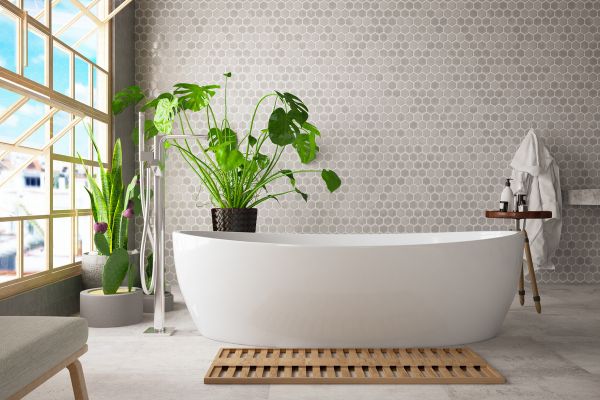There’s something remarkably satisfying about transforming a room with nothing more than a fresh coat of paint. Whether you’re sprucing up a dull bedroom or breathing new life into your living room, knowing the right DIY painting tips can make all the difference between a patchy disaster and a flawless finish. While hiring a professional painter might seem like the easiest route, many homeowners are discovering that, with the right approach, painting can be a rewarding and even enjoyable do-it-yourself project.
Preparing the Space for Success
One of the most overlooked yet critical stages of any painting project is preparation. Before even opening that can of paint, it’s essential to ensure your space is ready to handle the transformation. Start by clearing the area as much as possible, removing furniture and covering floors with protective sheets. Cleaning the walls thoroughly to eliminate dust, grime, and oils ensures that the paint adheres properly and lasts longer.
Choosing the right tools is equally vital. Investing in high-quality brushes, rollers, and painter’s tape might cost a bit more upfront, but the result will speak volumes in terms of quality. Brushes that shed bristles or rollers that leave uneven textures can ruin an otherwise perfect job. Ensuring your surfaces are smooth, patched, and primed sets the stage for a finish that looks polished and professional.
Selecting the Right Paint
Choosing paint isn’t just about picking a color that catches your eye. There’s a science to selecting the right type of paint for different rooms and surfaces. For instance, high-traffic areas such as hallways or kitchens often benefit from washable and durable finishes like satin or semi-gloss. In contrast, flat or matte finishes work well in low-traffic areas, hiding imperfections on walls more effectively.
Understanding the undertones in paint can also help avoid unexpected results once the paint dries. Colors often look different under various lighting conditions, so it’s wise to test samples in different parts of the room before making a final decision. These DIY painting tips are not just about technique—they’re about being strategic in your choices from the beginning.
Mastering the Technique
Achieving a smooth and even coat requires more than just rolling paint onto a wall. Begin by cutting in the edges with a brush—this involves painting around trim, corners, and ceilings before using a roller on the larger areas. This approach ensures you won’t miss any hard-to-reach spots, giving you a more cohesive finish.
When using a roller, apply the paint in a “W” or “M” motion. This technique helps distribute the paint evenly across the wall, reducing streaks and roller marks. Maintaining a wet edge while painting is crucial, as it prevents lap marks that can appear when dry paint overlaps with fresh strokes.
It’s also important not to rush. Allowing adequate drying time between coats and following the paint manufacturer’s instructions can significantly affect the final result. Impatience often leads to smudges, uneven layers, and a less-than-satisfying finish.
Creating Crisp Edges and Clean Lines
Few things scream amateur like sloppy edges where walls meet ceilings or trim. Fortunately, one of the most effective DIY painting tips is also one of the simplest—proper taping. Carefully applied painter’s tape can help you achieve those crisp, clean lines that give a room a professional touch.
Apply the tape smoothly and press down firmly to prevent paint from bleeding underneath. Removing the tape at the right time is equally important. Wait until the paint is slightly dry but not fully hardened. This way, the tape peels off cleanly without pulling up chunks of paint or leaving jagged edges behind.
Handling Common Painting Challenges
Even with preparation and care, painting projects can present unexpected challenges. One frequent issue is dealing with dark or bold colors. These shades often require multiple coats or a tinted primer to achieve full coverage. Applying a white primer under a vibrant red, for example, may result in uneven coloration or visible streaks. Instead, using a grey-tinted primer can create a neutral base that enhances the color’s richness.
Another common problem is paint splatter, which can be minimized by using slower strokes and not overloading the brush or roller. If you do happen to spill or splatter paint, cleaning it up immediately with a damp cloth is key to avoiding permanent stains or smudges.
Temperature and humidity also play a role in how your paint dries. Ideal conditions are typically between 50°F and 85°F with low humidity. Painting during extremely humid or cold weather can cause paint to dry improperly, leading to bubbling or peeling over time. Understanding and adapting to your environment ensures a longer-lasting finish.
Adding the Final Touches
Once the painting is done, and the walls have dried completely, it’s time for the finishing touches that bring everything together. Carefully remove any tape, touch up small areas that may have been missed, and reattach any outlet covers or fixtures that were removed.
At this stage, step back and assess your work under different lighting conditions. Natural light can reveal inconsistencies or missed spots that artificial lighting might hide. Taking this final walk-through allows you to correct any issues before moving furniture back in and declaring the job complete.
Enjoying the Transformation
Completing a painting project yourself is not just about saving money—it’s about the satisfaction of transforming a space with your own hands. By applying these DIY painting tips, you’re not only improving the look of your home but also developing a skill that adds long-term value.
Moreover, painting can become a creative outlet, allowing you to express personality and taste throughout your living environment. Whether you prefer soft pastels, dramatic tones, or classic neutrals, mastering these techniques puts the power of design in your hands.
Conclusion: Confidence in Every Stroke
A flawless paint job starts with thoughtful preparation and ends with attention to detail. With the right mindset, materials, and method, any homeowner can achieve stunning results without calling in a professional. These DIY painting tips are more than just guidelines—they’re a roadmap to success for anyone ready to refresh their space with confidence. Embrace the process, take your time, and watch as a splash of color transforms not just your walls but your entire home atmosphere.



